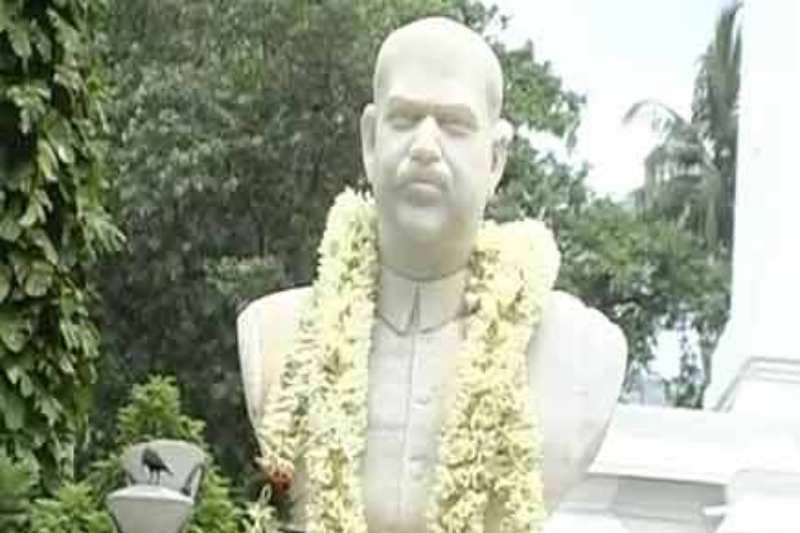23rd June marks the death of Shyama Prasad Mukherjee which is celebrated as “balidan divas”.
“Shyama Prasad Mukherjee balidan divas is celebrated on 23 June every year, but this year a big rally will be organised & party president Amit Shah will also address the rally on June 23: Ravinder Raina, J&K BJP chief”
Who was Shyama Prasad Mukherjee?
Shyama Prasad Mukherjee came from quite an illustrious background, his father Sir Ashutosh Mukherjee was a High Court Judge, and also the Vice Chancellor of the University of Calcutta. Shyama Prasad himself graduated from University of Calcutta in 1921 and later his masters from the same institution. He practised law for some time and later went to England in 1926, for further studies. On return to Kolkata, he became the youngest Vice-Chancellor of Kolkata University and served in that position from 1934-38.
It was after he finished his term as Vice-Chancellor of Kolkata University, that he entered into active politics, joining the Congress party, and entering the Legislative Council in Bengal. However, with Congress boycotting the legislatures, he also quit, and later stood for elections as an Independent candidate, and won. He joined the Krishak Party-Muslim League coalition Govt in Bengal and served as Finance Minister from 1941-42. He was arrested in Bhagalpur when he proceeded there to defy the ban on the Hindu Mahasabha, of which he was President. He was also among the leaders to reject the Cripps Mission. He later resigned from the Ministry as a protest against the Governor’s policy of repression in Midnapore, as also the Muslim League’s stand on having a separate Muslim nation.
As President of the Hindu Mahasabha, he had organized large-scale relief work for the drought-affected in Bengal. Also founded an English daily, the Nationalist, and played a crucial role in guiding students protesting against
the Govt, on observing I.N.A Day in 1945.
The event that influenced Shyama Prasad Mukherjee’s ideology, one was the Noakhali riots, that occurred in 1946 during months of October and November. Occurring primarily in Chittagong division of East Bengal( now in Bangladesh), it was one of the worst genocides of Hindus, by Muslim League mobs, that involved forced conversions, arson, mass rapes and looting. Begining on Durga Puja, it was a series of planned forced attacks on the Hindu population in that region, which at the last count led to 5000 dead. Another was the Kolkata riots of 1946, carried out by the Muslim League leader Suhrawady, in response to Direct Action Day.
Though he was opposed to partition initially, after Noakhali and the Direct Action Day riots in Kolkata, he was convinced, that it would be equally wise to partition Bengal too, with the Hindu population living in the Western part, that would be a part of the Indian Union.
After independence, Shyama Prasad Mukherjee was invited by Nehru to join the Union Cabinet as Minister for Industries and Supplies. He framed the first Industrial policy of India after independence, and was an able administrator, winning the admiration of many in the Govt as well as in Congress.
His resignation from the Union Cabinet in 1950 was over the Nehru-Liaqat Ali Pact, to which he was strongly opposed. It was due to the widespread massacres against Hindus in Eastern Pakistan ( now Bangladesh) that in turn led to huge waves of migration into Kolkata and Bengal. He was dead against any form of agreement or treaty with the Pakistan Govt, which he held responsible for the massacres. Considering Nehru’s signing the pact as appeasement he resigned from the Cabinet.
Post his resignation he devoted his work full time to the RSS, became its lifelong pracharak, worked extensively in Lakhimpur district of Assam. The Bharatiya Jan Sangh was founded by him in Oct 1951 after due consultation with Guru Golwalkar, the then RSS head. In 1952, the Jan Sangh won 3 seats in the Lok Sabha elections, with Mukherjee himself winning from Kolkata South. Along with other opposition members in Parliament he founded a National Democratic party, that would be the core opposition to Nehru, though not officially recognized.
As an opposition leader, he firmly believed in individual liberty and freedom of expression. He opposed the amendment to the Indian Constitution, putting restrictions on Freedom of Expression and also detention without trial. The main ideological points of BJS which were laid down by Shyama Prasad Mukherjee were Uniform Civil Code for everyone, including Muslims and Hindus, scrapping Article 370 and full integration of Jammu and Kashmir with Indian Union and a ban on Cow Slaughter.
In 1953, he planned to travel to Jammu in solidarity with the protests by the Praja Parishad there, which was demanding full integration of Jammu and Kashmir with the Indian Union. However as per Kashmir’s special status then, Indian citizens could not legally enter the state, unless they had prior permission and they had to carry their ID cards. The Prime Minister of Kashmir had full powers to decide who could or could not enter the state, and this was protested by Mukherjee. He famously claimed Ek desh mein do Vidhan, do Pradhan aur Do Nishan Nahi challenge- One country can’t have 2 Prime Ministers, 2 Constitutions and 2 Emblems. His reference was to the fact that Kashmir then had its own emblem, own status, own Constitution. He entered Kashmir illegally on May 1953 protesting against the law, which demanded special permission to visit it as well as ID cards. Arrested on May 11, 1953, when he crossed the border into Kashmir, he died on June 23, 1953, under rather mysterious circumstances in prison.

